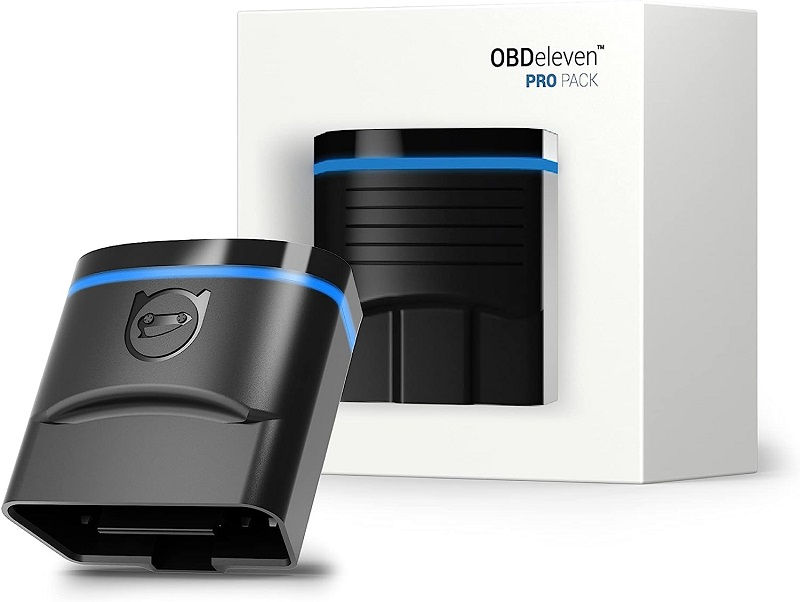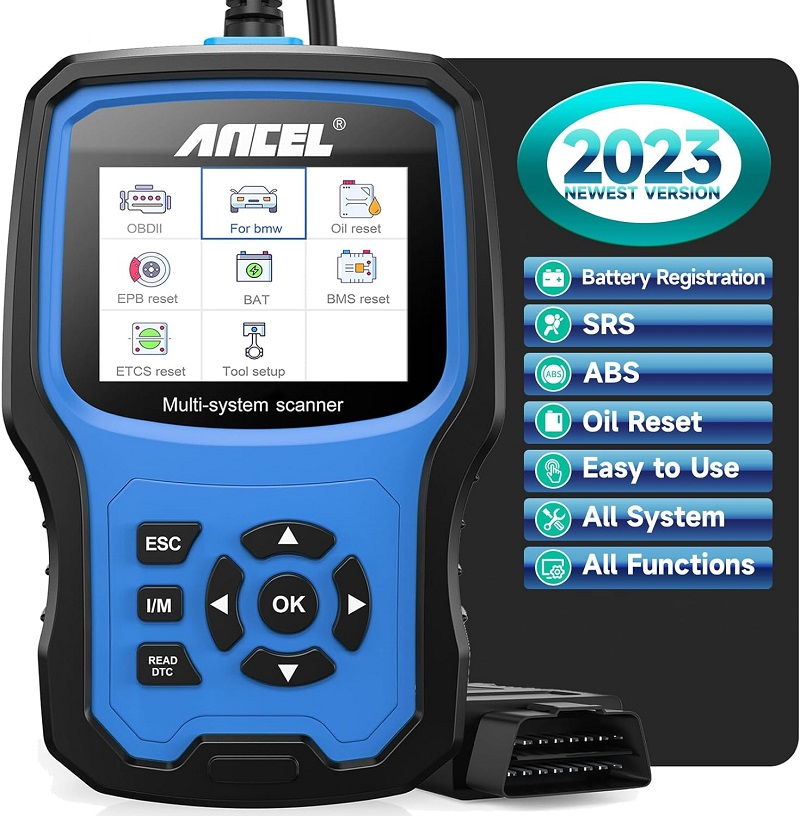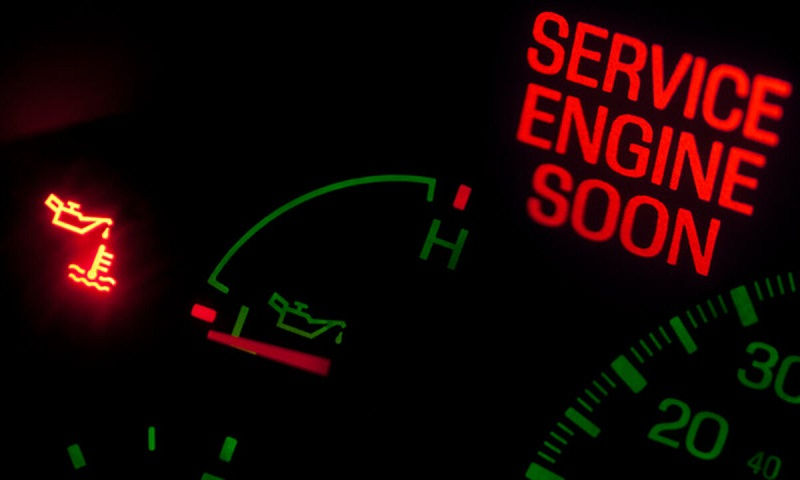This post contains affiliate links. This means I will make a commission at no extra cost to you should you click through and make a purchase [ “As an Amazon Associate, I earn from qualifying purchases.” ]. Read the full disclosure here.
BMW Service Engine Soon Light GuideMechanic.Com Whether you’re a proud BMW owner or considering purchasing one, it’s essential to understand the significance of the Service Engine Soon (SES) light.
This article aims to provide you with a detailed and comprehensive guide on what the BMW Service Engine Soon light means, why it illuminates, and what steps you can take when it appears.
As a BMW driver, you may have experienced the momentary panic that arises when the Service Engine Soon light suddenly appears on your dashboard.
However, rather than succumbing to worry, it’s crucial to remain calm and informed. The SES light is an essential indicator that helps you identify potential issues with your vehicle, ensuring timely maintenance and preventing more significant problems down the road.
See Also: P0441 Bmw 323i: Common Causes
Understanding the SES Light: What it Signifies

The Service Engine Soon (SES) light, also known as the Check Engine light, is a crucial warning indicator in your BMW. This section will explore the various meanings associated with the SES light and provide you with a clear understanding of what it signifies.
1. Minor Issue
One possible reason for the SES light to illuminate is a minor issue with your vehicle. This could include a loose gas cap, a faulty sensor, or a temporary glitch in the system.
While these issues may not pose an immediate threat to your BMW’s performance, it is still essential to address them to prevent further complications.
2. Pending Failure
In some cases, the SES light may indicate a pending failure or an issue that could escalate if left unattended. This could include a failing sensor, a malfunctioning component, or an impending emissions-related problem.
When the SES light indicates a pending failure, it is crucial to take prompt action to prevent more significant damage and costly repairs.
3. Severe Problem
Occasionally, the SES light may illuminate to signal a severe problem that requires immediate attention. This could include a major engine malfunction, a critical component failure, or a safety-related issue.
When the SES light indicates a severe problem, it is crucial to stop driving the vehicle immediately and seek professional assistance to avoid further damage or potential accidents.
Understanding the different meanings associated with the SES light is vital for accurately diagnosing the issue and taking appropriate action.
By paying attention to other accompanying symptoms, such as unusual noises, decreased performance, or difficulty starting the engine, you can gain further insights into the nature of the problem and make informed decisions.
Common Reasons for SES Light Illumination

Several factors can trigger the illumination of the Service Engine Soon light in your BMW. This section will delve into the most common reasons behind the SES light turning on, including issues with the oxygen sensors, the catalytic converter, or a loose gas cap.
1. Faulty Oxygen Sensors
Oxygen sensors play a crucial role in monitoring the level of oxygen in the exhaust gases. When these sensors malfunction or become damaged, they can send inaccurate readings to the engine control unit (ECU), triggering the SES light. Faulty oxygen sensors can affect fuel efficiency, emissions, and overall engine performance.
2. Failing Catalytic Converter
The catalytic converter is responsible for reducing harmful emissions by converting them into less harmful substances. Over time, the catalytic converter can deteriorate due to wear and tear or exposure to harsh conditions.
A failing catalytic converter can trigger the SES light, indicating a decrease in emissions efficiency and potentially causing your vehicle to fail emissions tests.
3. Loose or Faulty Gas Cap
A loose or faulty gas cap is one of the most common causes of the SES light illumination. If the gas cap is not properly sealed, it can lead to a minor vacuum leak in the fuel system, triggering the SES light. Fortunately, this issue is relatively easy to resolve by ensuring the gas cap is tightly secured or replacing it if necessary.
4. Malfunctioning Mass Airflow Sensor
The mass airflow sensor (MAF) measures the amount of air entering the engine to determine the correct fuel-air mixture. If the MAF sensor becomes dirty or malfunctions, it can provide incorrect readings to the ECU, causing the SES light to illuminate. Cleaning or replacing the MAF sensor can resolve this issue.
5. Ignition System Problems
Issues with the ignition system, such as faulty spark plugs, ignition coils, or ignition control modules, can cause the SES light to turn on.
See Also: P0441 Bmw E36: Importance Of Addressing P0441 Code
These problems can lead to misfires, decreased engine performance, and increased fuel consumption. Proper diagnosis and repair of the ignition system components can resolve this issue.
6. Emissions System Malfunctions
Various components of the emissions system, including the evaporative emissions control system (EVAP) or the exhaust gas recirculation (EGR) system, can malfunction and trigger the SES light. These malfunctions can result in increased emissions, decreased fuel efficiency, and potential engine damage if left unaddressed.
7. Sensor Failures
Modern BMWs are equipped with numerous sensors that monitor various aspects of the vehicle’s performance. If any of these sensors fail or provide inaccurate readings, it can trigger the SES light. Some common sensor failures include the coolant temperature sensor, the throttle position sensor, or the crankshaft position sensor.
8. Electrical or Wiring Issues
Electrical or wiring problems can also lead to the illumination of the SES light. Issues such as short circuits, damaged wiring harnesses, or loose connections can disrupt the communication between various components of the vehicle, causing the SES light to turn on. Proper diagnosis and repair of electrical or wiring issues are necessary to resolve this problem.
9. Engine or Transmission Problems
In rare cases, the SES light may indicate more severe issues with the engine or transmission. These could include internal engine damage, transmission failures, or major component malfunctions.
When the SES light is accompanied by symptoms such as excessive vibrations, harsh shifting, or loss of power, immediate professional diagnosis and repair are essential.
10. Software or Computer Glitches
Occasionally, software or computer glitches within the vehicle’s onboard computer system can trigger the SES light. These glitches may be temporary or occur due to software updates or malfunctions. In such cases, resetting the SES light or updating the vehicle’s software can resolve the issue.
Understanding the common reasons behind SES light illumination can help you diagnose the problem more accurately. However, it’s important to note that the SES light is a general warning indicator, and further diagnosis may be necessary to pinpoint the exact cause of the issue. Consulting with a qualified BMW technician or using an OBD-II scanner can provide more specific error codes and insights into the problem.
How to Diagnose the Problem

When faced with an illuminated SES light, it’s crucial to diagnose the underlying issue accurately. This section will guide you through the process of diagnosing the problem, including using an OBD-II scanner, interpreting error codes, and seeking professional assistance.
1. Using an OBD-II Scanner
An OBD-II scanner is a diagnostic tool that connects to your BMW’s onboard computer system to retrieve error codes and provide valuable information about the issue triggering the SES light. This section will explain how to use an OBD-II scanner effectively, including connecting it to the vehicle’s diagnostic port, retrieving error codes, and interpreting the results.
2. Interpreting Error Codes
Once you’ve retrieved the error codes using the OBD-II scanner, it’s essential to interpret them accurately. This section will provide a comprehensive list of common error codes related to the SES light and their potential meanings. Understanding the error codes can give you insights into the specific system or component that requires attention.
3. Seeking Professional Assistance
While an OBD-II scanner can provide valuable information, some issues may require professional diagnosis and repair. This section will guide you in determining when it’s necessary to seek assistance from a qualified BMW technician. They have the expertise and specialized tools to diagnose complex problems accurately and ensure proper repairs.
4. Addressing Simple Fixes
In some cases, the SES light may be triggered by a simple issue that you can address on your own. This section will outline common simple fixes, such as tightening a loose gas cap, replacing a faulty sensor, or cleaning a dirty MAF sensor. Taking prompt action on these simple fixes can resolve the issue without the need for professional intervention.
5. Considering Vehicle History
Understanding your BMW’s maintenance and repair history can provide valuable insights when diagnosing SES light-related problems.
See Also: P0441 Bmw E39: Causes Of P0441 Code In BMW E39
This section will explain how to review your vehicle’s history, including previous repairs, maintenance records, and any recurring issues. This information can help you identify patterns and potential underlying causes of the SES light illumination.
Steps to Take When the SES Light Appears
Once you’ve identified the cause of the SES light, it’s essential to know the next steps to take. This section will outline the actions you should consider, such as checking for simple fixes, scheduling a service appointment, or seeking immediate roadside assistance.
1. Checking for Simple Fixes
Before panicking or assuming the worst, it’s important to check for simple fixesthat may resolve the issue triggering the SES light.
This section will provide a step-by-step guide on checking for simple fixes, such as ensuring the gas cap is tightly secured, inspecting for loose or disconnected wires, or resetting the SES light. By taking these initial steps, you may be able to resolve the problem without the need for professional assistance.
2. Monitoring Vehicle Performance
After checking for simple fixes, it’s crucial to monitor your BMW’s performance and any accompanying symptoms. This section will guide you in observing factors such as engine vibrations, unusual noises, changes in fuel efficiency, or difficulty starting the engine. By documenting these observations, you can provide valuable information to a technician if further diagnosis is required.
3. Scheduling a Service Appointment
If the SES light persists or if you’re unable to identify and resolve the issue yourself, it’s advisable to schedule a service appointment with a qualified BMW technician.
This section will outline the steps to take when scheduling a service appointment, including contacting authorized service centers, providing details about the SES light, and arranging for a convenient time for diagnostics and repairs.
4. Seeking Immediate Roadside Assistance
In some cases, the SES light may indicate a severe problem that requires immediate attention, such as a major engine malfunction or a critical component failure.
This section will explain when it’s necessary to seek immediate roadside assistance, such as if the SES light is accompanied by smoke, excessive vibrations, or a sudden loss of power. Prompt action in these situations can help prevent further damage and ensure your safety on the road.
Preventive Maintenance to Avoid SES Light Activation
Prevention is always better than cure. In this section, we will discuss essential preventive maintenance measures you can implement to minimize the chances of the SES light appearing in the first place. From regular oil changes to proper vehicle inspections, these practices will help keep your BMW running smoothly.
1. Regular Oil Changes
Regular oil changes are crucial for maintaining the health and performance of your BMW’s engine. This section will explain the importance of oil changes, including how fresh oil helps lubricate engine components, prevent excessive wear, and keep the engine running efficiently.
Following the manufacturer’s recommended oil change intervals is essential to avoid potential engine-related issues that can trigger the SES light.
2. Scheduled Maintenance Services
Adhering to the manufacturer’s scheduled maintenance services is vital for keeping your BMW in optimal condition. This section will outline the recommended maintenance tasks, such as fluid checks and replacements, filter changes, and inspections of critical components.
By following these maintenance schedules, you can detect and address potential issues before they escalate and trigger the SES light.
3. Proper Vehicle Inspections
Regular inspections of your BMW’s various systems and components can help identify potential problems early on. This section will guide you through the process of conducting proper vehicle inspections, including checking the tires, brakes, suspension, and electrical systems. By detecting and resolving issues proactively, you can reduce the likelihood of the SES light illuminating unexpectedly.
4. Addressing Recalls and Technical Service Bulletins
BMW occasionally issues recalls or technical service bulletins (TSBs) to address specific issues or provide updates for certain models.
See Also: P0441 Bmw X5: Fixing P0441 Error In BMW X5
This section will explain the importance of staying informed about recalls and TSBs, as they may address potential problems that can trigger the SES light. Regularly checking for any outstanding recalls or TSBs and promptly addressing them can help prevent SES light activations.
5. Using High-Quality Fuel and Fluids
The quality of fuel and fluids you use in your BMW can significantly impact its performance and longevity. This section will highlight the importance of using high-quality fuel, engine oil, transmission fluid, and other fluids recommended by the manufacturer.
High-quality fuels and fluids help maintain optimal engine performance, prevent deposits or contaminants, and reduce the likelihood of SES light activations.
6. Driving Habits and Conditions
Your driving habits and the conditions in which you drive can also influence the likelihood of SES light activations. This section will provide guidance on adopting good driving habits, such as avoiding aggressive driving, minimizing short trips, and allowing the engine to warm up properly.
Additionally, it will highlight the importance of driving cautiously in adverse conditions to prevent potential damage to critical components.
Related video of Understanding the BMW Service Engine Soon Light: A Comprehensive Guide
- Seafoam Catalytic Converter Cleaner: It Work & How to Use It? - April 18, 2025
- Rislone Catalytic Converter Cleaner: What It Is, How It Works - April 18, 2025
- Wynn’s Catalytic Converter Cleaner 325ml - April 17, 2025

